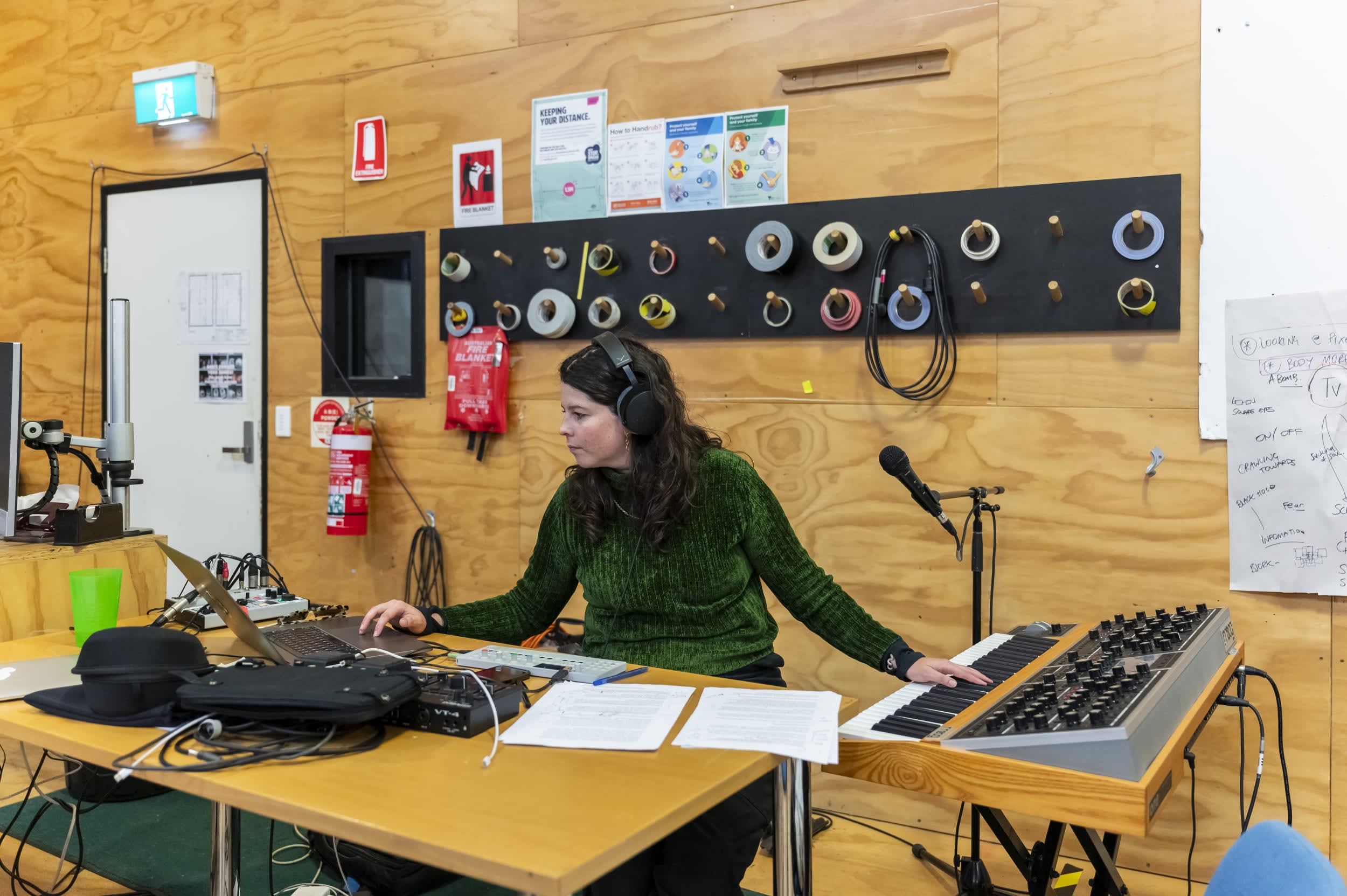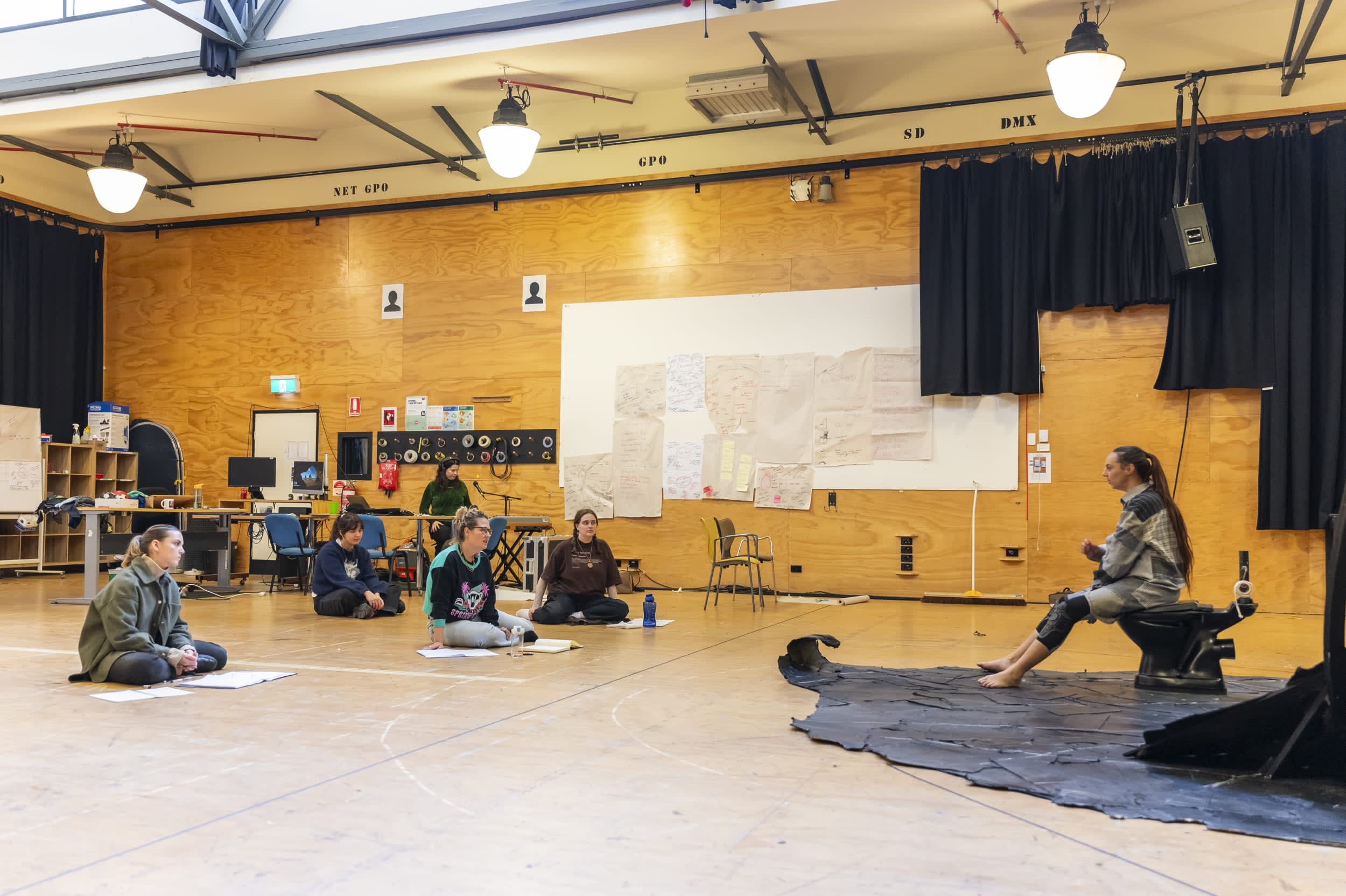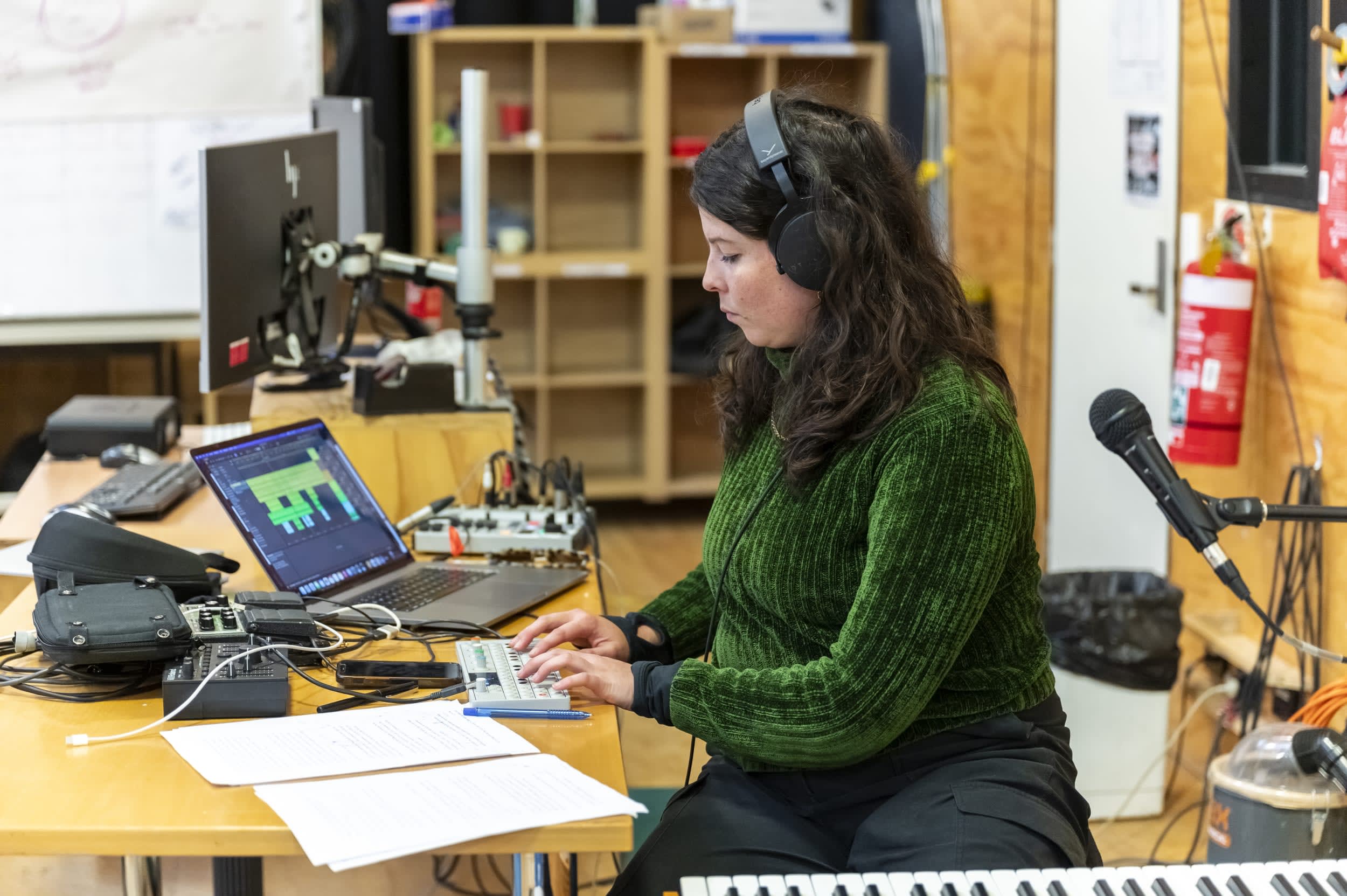From collating playlists to field recordings, Composer & Sound Designer Rachel Lewindon discusses her creative process for World Problems.
How would you describe the overall composition/sound design you've created for World Problems? What is the world of this play?
Weird! Haha, no it's a wonderful collage of what humanity has been, what it is, and what it could be. It’s joyous, silly and dark – similar to Emma Mary Hall's text.
To me, the world of World Problems doesn’t abide by linear time. We sort of experience these adjustments in perception, like we’re just tilting reality slightly. I wanted to use this feeling in the sound where the sounds we hear get reframed or used slightly differently as the play shifts.
Where have you drawn inspiration from?
I love to make a playlist of songs that I like the textures and colours of that I want to inspire the work. The playlist gives me a sense of the world that we're in – for World Problems, the world has been founded on a juxtaposition of the natural and unnatural. I’ve been listening to a diverse set of artists from film composers like Jerskin Fendrix, Colin Stetson and Jóhann Jóhannsson, to contemporary artists like Björk, Brian Eno and Oneohtrix Point Never, and back to the classical impressionist roots of Claude Debussy, Erik Satie and Edvard Grieg. I love how all of these artists use textures and harmonic functions that place them outside of their specific time period and sonic expectations. They’re all visionaries for their time, and it’s a joy to have them influence the work!
 Rachel Lewindon in rehearsal. Photo: Tiffany Garvie
Rachel Lewindon in rehearsal. Photo: Tiffany Garvie
My practice comes from a live performance background, so I like to use a hybrid of my own recordings, existing music and then having the flexibility of being able to play live in the room and to adapt to changes that come up in rehearsal.
I have my laptop running some sounds that I've locked in, or some base palettes that I've made that I like. I've got a small synthesizer sampler that I'm playing some sampled voice on, which helps me add to the voice I've already recorded, and let’s me play with some effect parameters live. Then I have this big spaceship-looking synthesizer (a Moog One) that I've got a lot of pre-programmed sounds on. On this, I make a few textures or sounds that I like, and then I have them ready to play and test out in rehearsal. In this, I also have a microphone that's running into a vocoder (which turns your voice into this sort of digital-sounding thing!). Im enjoying playing live, because it gives me the freedom to adapt to what is happening and build the sound alongside the physicality and text. This practice comes from a devised theatre background where design, text and physicality all work collaboratively. The last thing that’s fairly crucial (I’m nearly done!) is the piano, which is the foundation of my compositional process. So everything you’ve heard musically started as an idea on the piano, that then get’s morphed into other instruments and sounds. TLDR: Laptops, Vocals, Synthesisers and Pianos oh my!
How does your music/sound manipulate tension?
Around 80 percent of the way through the play, the work starts to accelerate and jump through time towards a climactic moment. Here the sound works in a way that throws the listener around in time as well – almost as if there are multiple times existing at once: some slow, some fast. This is done rhythmically as well as harmonically, with rhythms that shift; starting slow, becoming quick, then slow again, then so fast that rhythms are unintelligible. Harmonically it’s moving through chords that lift us but never repeat and change the harmonic grounding constantly so we are unable to predict or hold on to anything we know. These two factors (I believe at least) heighten and add the tension to the text!
How does music/sound shift the mood in the play?
In the very first page of the text, Carly becomes her father yelling at a TV and we hear a darker digital sound coming from the back of the space. This is the first indication that there is a deeper and darker world and gives us a glimpse into the relationship between the performer and the sound.
 Stage Manager Annah Jacobs, Lighting Designer Harrie Hogan, Composer & Sound Designer Rachel Lewindon, Director Cassandra Fumi, Movement Consultant Amelia Jean O'Leary and Carly Sheppard in rehearsal. Photo: Tiffany Garvie
Stage Manager Annah Jacobs, Lighting Designer Harrie Hogan, Composer & Sound Designer Rachel Lewindon, Director Cassandra Fumi, Movement Consultant Amelia Jean O'Leary and Carly Sheppard in rehearsal. Photo: Tiffany Garvie
What kinds of sounds/instruments are you using in your design and why?
The palette primarily uses voice, synthesizer and field recordings, with sprinklings of recorder. Linking to the way we are introduced to the objects in the space – we hear these all in their natural /simplest/most familiar context before they are reframed and processed to create abstract versions of themselves.
I've chosen to use voice in this work because we all have a voice – it's a sound source that allows a lot of access because we are so familiar with the sound. Anyone can sing, and to me, voice represents the scale of a human life; from a child to an elderly person, the change of voice over the course of one’s life is so innate to the human experience. So I went on a task of recording as many different voices as I could from some very generous and keen community singing groups. I’ve got voices from ages 7 up to 70! These voices are heard at the end of the show where the intention is to create the sense of the collective rather than the singular human on stage. This supports the idea that the whole play is a collage of humanity, a composite of the human experience.
Are there any recurring themes or motifs that we should listen for?
Absolutely! There is a melodic motif that simultaneously represents both performer Carly Sheppard and humanity, which you hear snippets of throughout the show until it is realised at the very end. Additionally there is a timbral motif (this is not melodic but a texture of sound) that we hear every time Carly goes towards the centre hole of the structure that is contextualised in a climactic moment about 80 percent of the way through.
 Rachel Lewindon in rehearsal. Photo: Tiffany Garvie
Rachel Lewindon in rehearsal. Photo: Tiffany Garvie
World Problems plays 3 May–22 May at Southbank Theatre, then embarks on a regional tour 24 May–7 June. Book now.
